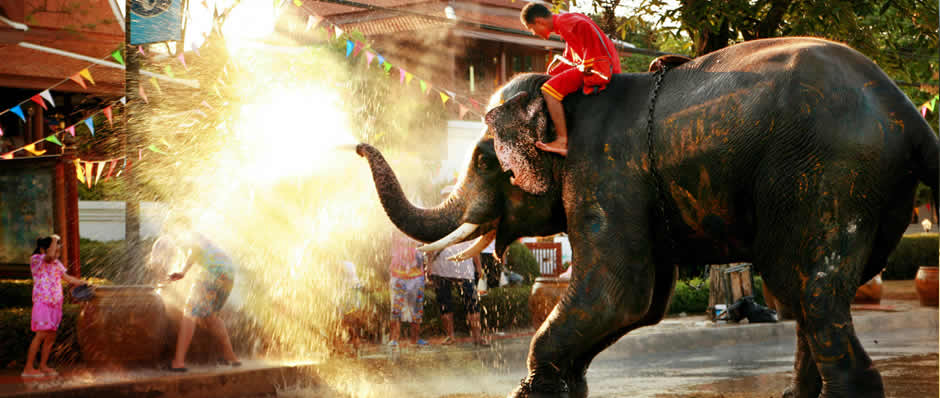Songkran or the Thai New Year has been celebrated in the kingdom for hundreds of years. A word “Songkran” derives. The root of the word comes from Sanskrit, meaning ‘transformation’or ‘change’, to be specific, the transformation of the zodiac signs.
Traditionally this was the time when agricultural work could come to a halt for a few days, so that the Thai people could pay respect to their ancestors and senior members of the family by sprinkling their hands with scented water. It is also a time to clean the images of Buddha. Using the ‘blessed’ water that cleaned the images to soak other people is seen as a way of paying respect and bring good fortune.
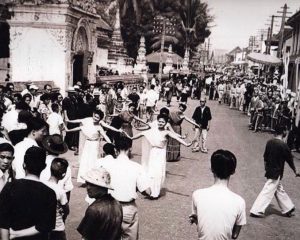
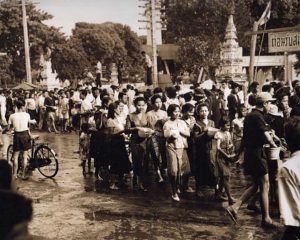
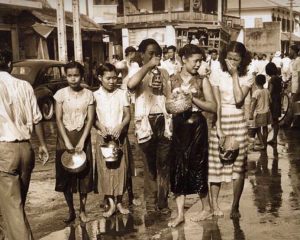
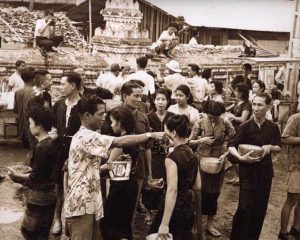
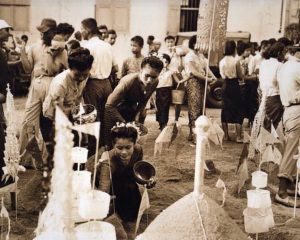
In present, the date of the ‘Great Songkran’ (Mahasongkran) or the ‘New Year’ is set on the 13th of April, the date that the sun moves from Pisces to Aries, Songkran festival consists of 3 full days of making merit. Mahasongkran day or the New Year’s Eve falls on the 13th, Nao day or the day in the middle on the 14th, and lastly the New Year on the 15th.
It also doesn’t hurt that April is the hottest part of the year in Thailand, so being soaked is a refreshing escape from the heat and humidity.
Nowadays Thais will walk the streets having ‘water fights’ using containers of water or water guns, or stand at the side of roads with a hose and soak anyone who passes by.
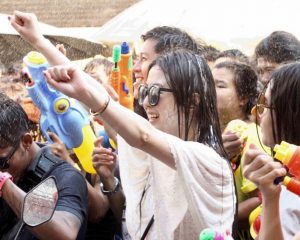
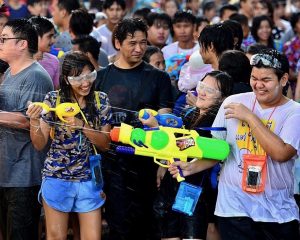
You may also get covered in chalk, a custom originating from the chalk used by monks to mark blessings. This combination of water and powder is almost identical to the celebrations of Holi, and indeed, it maybe that the customs originated in India as certainly Songkran is celebrated more widely and longer in the Northern part of Thailand.
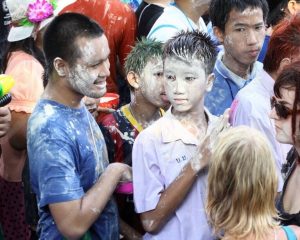
By Sunray


